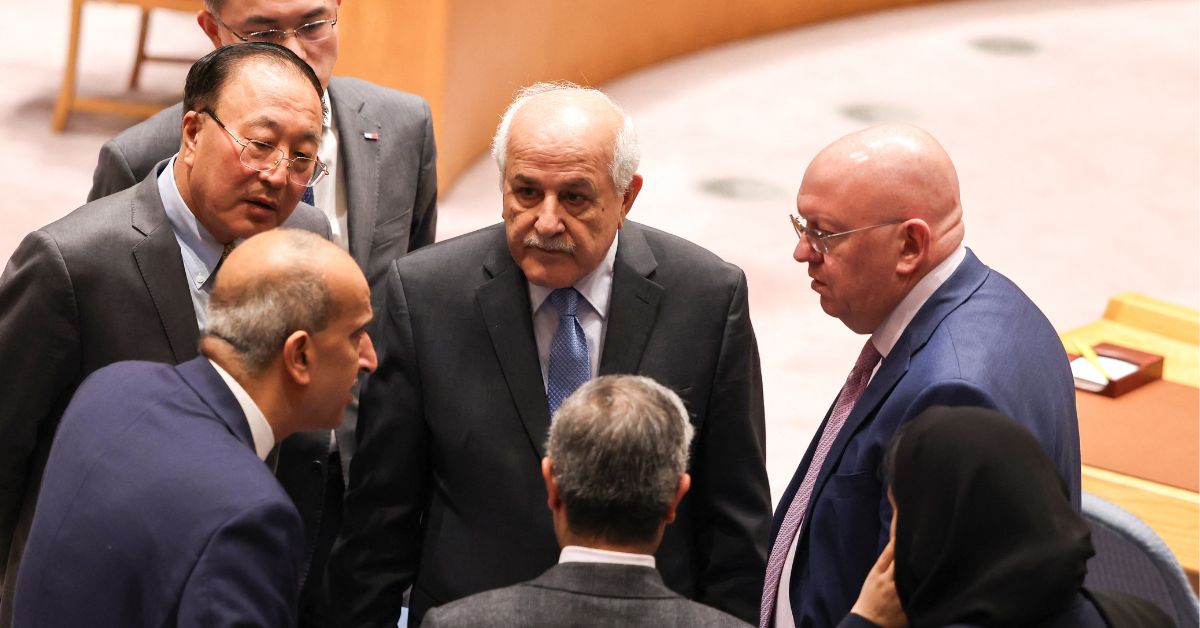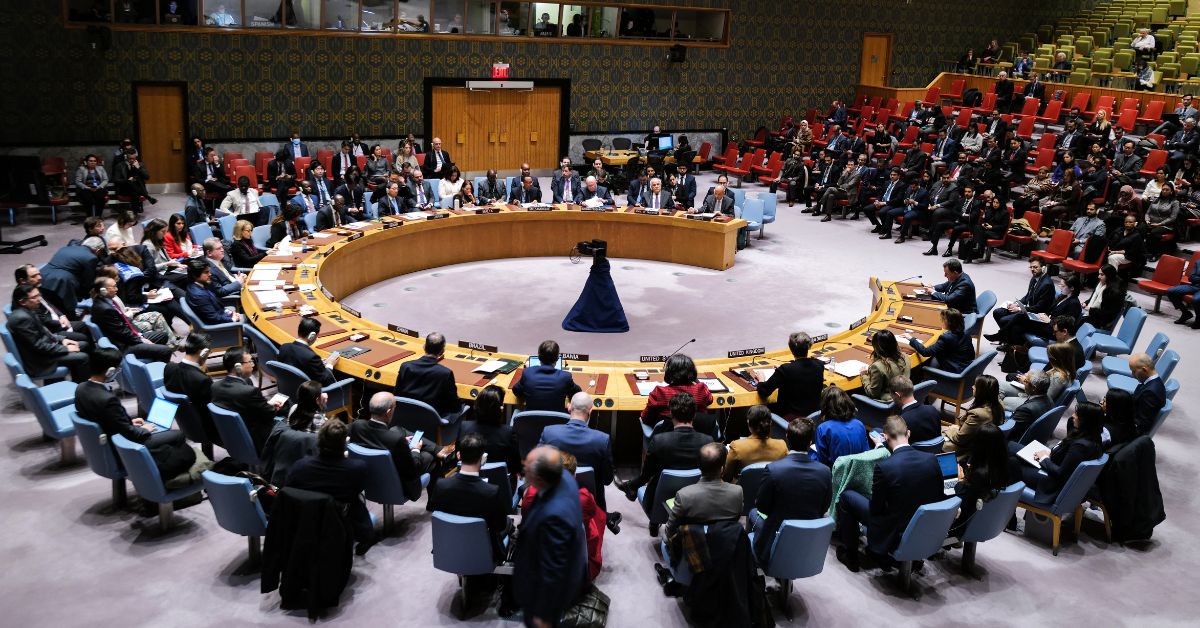UNITED NATIONS, UNITED STATES — Fighting escalated on Friday between Israel and Hamas in Gaza, coinciding with the UN Security Council’s approval of a long-delayed resolution to enhance aid to the besieged Palestinian territory, where civilians are desperately seeking food.
The health ministry in Hamas-controlled Gaza reported that over 48 hours, more than 410 people were killed in Israeli bombardment, including 16 in a Friday strike on the Jabalia district of Gaza City.
In another incident, four members of a family, including a girl, perished in a strike on a civilian vehicle in Rafah, southern Gaza, according to the ministry.
At A Glance Escalation in Gaza Conflict: Fighting intensifies between Israel and Hamas, sparking a humanitarian crisis in Gaza. UN Security Council Resolution: Approval of a resolution to provide aid to Gaza amidst food scarcity. Casualty Reports: Over 410 people killed in Israeli bombardment in 48 hours, including civilian deaths in Rafah and Jabalia. Humanitarian Aid Challenges: Difficulties in delivering aid due to ongoing conflict and infrastructure damage. International Diplomatic Efforts: The US and Russia abstain from UN vote demanding large-scale humanitarian aid. Growing Concerns of Regional Conflict: Cross-border assaults and involvement of Iran-backed groups raise alarm. Civilian Displacement and Suffering: Intense urban warfare displaces 1.9 million Gazans, with severe shortages of food and medical supplies.
On Friday, after diplomatic negotiations, the Security Council at last adopted a resolution “demanding” all parties in the conflict facilitate the “safe and unimpeded delivery of large-scale humanitarian aid”.
This UN resolution called for establishing “conditions for a sustainable cessation of hostilities” but stopped short of demanding an immediate halt to the fighting.
The United States, a key ally of Israel, which earlier this month blocked a vote for a ceasefire, abstained from the vote along with Russia. The diluted resolution passed with 13 favorable votes.
This action followed a warning from the UN’s World Food Programme about the high risk of famine facing Gaza’s population.
The council’s resolution is a step in the right direction… must be accompanied by massive pressure for an immediate ceasefire.
Riyad Mansour, Palestinian Envoy to the United Nations
The UK government termed it as “good news”, even as it reiterated calls for a “sustainable ceasefire”.
“It is good news that the UN has come together to back a resolution to get more humanitarian aid into Gaza,” UK Foreign Secretary David Cameron said.
The conflict began on October 7 when Hamas gunmen breached Gaza’s militarized border, killing approximately 1,140 people in Israel, predominantly civilians, based on an AFP compilation using Israeli data.
Hamas also captured about 250 individuals, with 129 still reportedly held in Gaza, per Israeli officials.
In response to vows to dismantle Hamas, Israel initiated intense bombardment and a ground invasion of Gaza, resulting in 20,057 deaths, as per the latest Hamas figures.
Most of the deceased are women and children, according to Hamas officials.
The manner in which Israel is conducting this offensive is creating massive obstacles to the distribution of humanitarian aid inside Gaza.
Antonio Guterres, UN Secretary-General
‘Massive Obstacles’
The Palestinian envoy to the United Nations, Riyad Mansour, described the council’s resolution as “a step in the right direction”. He emphasized that it “must be accompanied by massive pressure for an immediate ceasefire”.
However, Hamas, in a statement, criticized the resolution as “an insufficient measure that does not respond to the catastrophic situation created by the Zionist (Israeli) war machine”.
UN Secretary-General Antonio Guterres, speaking after the vote, stated that “the manner in which Israel is conducting this offensive is creating massive obstacles to the distribution of humanitarian aid inside Gaza”.
Hunger is present, and famine is looming in Gaza… Four out of five households in northern Gaza… are enduring days without food.
Tedros Adhanom Ghebreyesus, Head of the World Health Organization
The conflict has displaced 1.9 million Gazans, according to UN figures, out of a total population of 2.4 million. It has also rendered most of the 36 hospitals in the territory inoperable. Currently, only nine remain partially functioning, as reported by the World Health Organization.
The head of the UN agency, Tedros Adhanom Ghebreyesus, expressed concern on social media, saying, “Hunger is present, and famine is looming in Gaza. Four out of five households in northern Gaza, and half of the displaced households in the south, are enduring entire days and nights without food. This is heartbreaking.”
Urban Warfare
With large areas of Gaza reduced to ruins, the displaced are being forced into crowded shelters or tents, struggling to access food, fuel, water, and medical supplies.
Israel’s military operation in Gaza aims to deport the majority of the civilian population en masse.
Paula Gaviria Betancur, UN Special Rapporteur
The UN reports that the number of aid trucks entering Gaza is significantly lower than the daily average before the war.
Last week, Israel approved aid delivery via the Kerem Shalom crossing, with the army stating that an average of 80 trucks enter Gaza through it daily.
During a media tour of the facility on Friday, organized by the Israeli military, journalists observed a miles-long queue of aid trucks delayed for hours as they awaited inspection by soldiers.
Egyptian driver Said Abdel Hamid, undeterred by the wait, expressed his sentiment, stating, “I am proud to bring help to my Palestinian brothers,” as he uncovered his flour cargo for examination.
In northern Gaza, parts of Gaza City, including Shujaiya, have experienced intense street-by-street and even building-by-building combat between Israeli soldiers and Hamas fighters.
The military reported that the deaths of two more soldiers in Gaza increased the total number of Israeli military fatalities to 139 since the start of its ground assault on October 27.
Israel also reported the death of another soldier on Friday due to rocket fire from Lebanon, where Iran-backed Hezbollah and other groups have conducted near-daily cross-border assaults in support of Hamas.
Hizbollah confirmed the loss of two of its fighters on Friday.
In addition to regular skirmishes across the Lebanon border, the conflict has raised concerns about a wider regional clash. Missiles fired by Iran-backed Yemeni rebels, purportedly in solidarity with Gazans, have disrupted shipping in the Red Sea.
The United States has implicated Tehran in these attacks. “We know that Iran was deeply involved in planning the operations against commercial vessels in the Red Sea,” stated National Security Council spokeswoman Adrienne Watson.
‘Not a Life’
The Israeli military’s operations around the city of Khan Yunis in southern Gaza have “intensified” over the past week, according to a military spokesperson.
On Friday, the army issued an evacuation order for residents of the Bureij refugee camp in central Gaza, instructing them to move further south to the city of Deir al-Balah.
Many Gazans, having fled as far south as possible, report that they still cannot find safety.

Palestinians leaving the Bureij refugee camp with their belongings loaded on donkey carts were seen navigating the streets.
“This is not a life: no water, no food, nothing,” lamented Walaa al-Medini, who, injured in a strike on her home in Gaza City and confined to a wheelchair, shared her harrowing experience. “My daughter died in my lap, and I was rescued from under the rubble after three hours. Our house, along with everything around us, was destroyed.”
UN Special Rapporteur Paula Gaviria Betancur stated that “Israel’s military operation in Gaza aims to deport the majority of the civilian population en masse” — a claim that Israel has previously denied.
A one-week truce, which ended on December 1, resulted in the release of 105 hostages from captivity in Gaza. This included 80 Israelis, exchanged for 240 Palestinian prisoners.
A US-Israeli man, believed to have been captured by Hamas on October 7, was reported killed on the day of the attack, according to his kibbutz community on Friday. Gad Haggai, 73, a flautist, lost his life in the conflict. His 70-year-old wife remains captive.

